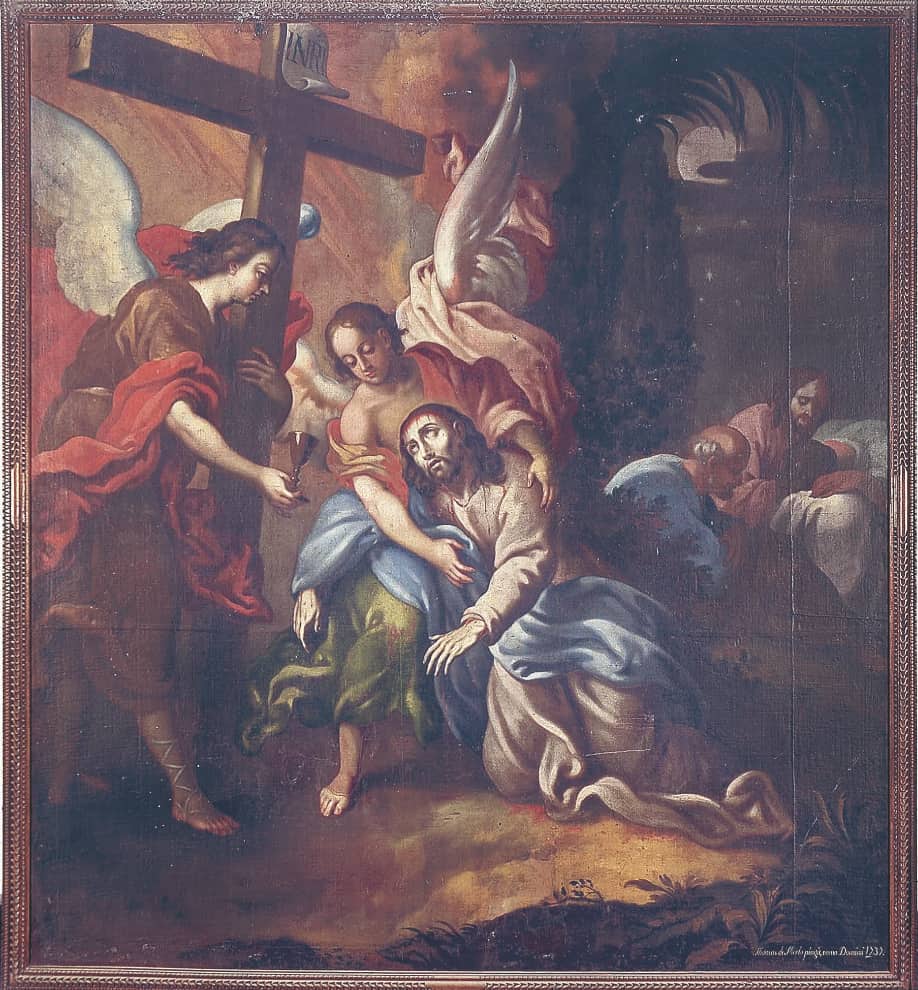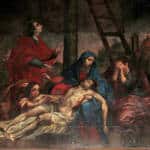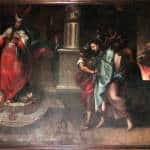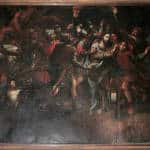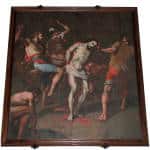ANTIGUA, Guatemala – Two weeks ago, thieves made off with six paintings by 18th century master Tomás de Merlo from the colonial-era church of El Calvario in La Antigua. Experts are devastated by the loss.
Late on the afternoon of Feb. 7, two men entered the historic church, tied up groundskeeper Feliciano Chávez hand and foot, and, joined by accomplices, cut the six paintings from their frames, one by one.
Experts have valued the paintings at about $300,000 each, or $1.8 million total. But for Miguel Torres, an academic fellow at the Guatemalan Academy of Geography and History, “it’s impossible to assign a monetary value to any of the paintings.”
“It’s ridiculous,” Torres lamented. “The paintings are part of our history.”
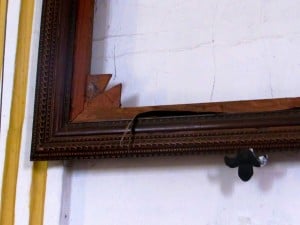
The stolen works, which depict the Passion of Christ and were commissioned after the 1717 San Miguel earthquakes to adorn the walls of El Calvario, represent a crucial component of Guatemala’s 18th century art.
In a recent story in the daily Prensa Libre, historian Haroldo Rodas called the theft “intolerable,” while art historian Guillermo Monsanto said the “heart of baroque Guatemala was stolen.”
Art theft is sadly not uncommon in Guatemala, and the Museum of Colonial Art in La Antigua has targeted before. In 2004, a large painting by Cristóbal de Villalpando was stolen and cut into pieces. A museum guard was killed in that heist. Both halves of the painting were later recovered in Mexico.
Guatemala hosts vast quantities of cultural patrimony, from ancient Mayan artifacts to the treasures of the colonial Catholic Church. Much of the Central American country’s fine art, like De Merlo’s paintings in El Calvario, originally was commissioned by the Catholic Church, and it is still largely under the church’s purview.
But the theft of the De Merlo paintings was preventable, Torres said.
“I personally recommended that [they] put in an alarm [on each painting],” Torres said. Security firms were solicited for bids on an alarm system, but in the end, “we never got the money.”
While El Calvario did have an alarm, it was only activated when the church was closed, and individual paintings were not wired.
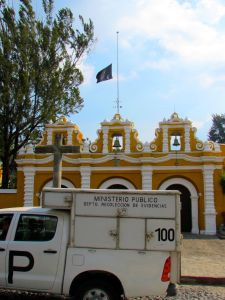
Now, finger-pointing has begun, with the Guatemalan Culture Ministry pinning the blame on the local Catholic Church. According to Eduardo Hernández, who polices the illicit traffic of cultural goods for the ministry, the paintings were stolen because of a “lack of cautiousness” and a “dearth of finances for a new alarm.”
Even Torres has admitted that many experts in the art world, including himself, were naive in thinking the large scale of the paintings would prevent their theft.
Experts say the biggest markets for stolen colonial Guatemalan art are Mexico and Spain, and according to Torres, the De Merlo paintings are likely in the hands of a private collector. Investigators have alerted Interpol and major auction houses and museums.
Meanwhile, the investigation continues, and a crime-scene squad from the Prosecutor’s Office closed the church for a day last week. Investigators also have requested polygraphs for church employees, and the government is offering a $13,000 reward for information leading to the paintings’ safe return.
Police say anyone with information should call +(502) 2239-2100.
Benjamin Reeves is a freelance journalist based in Antigua, Guatemala. Follow him on Twitter and on his blog.
More of the stolen paintings:

